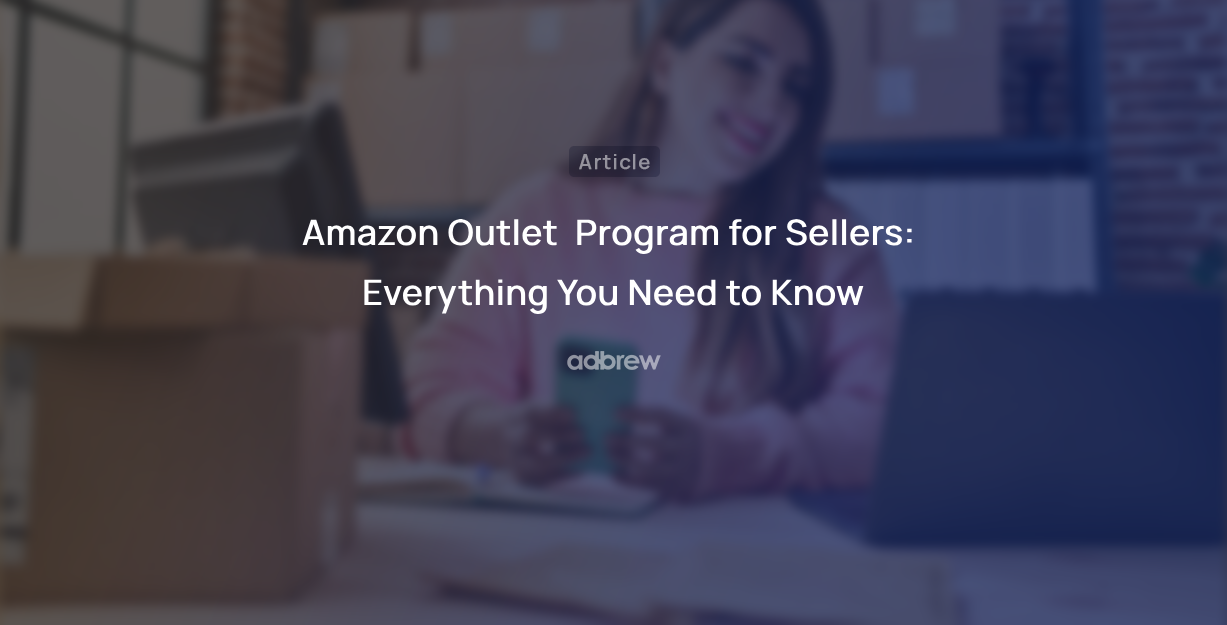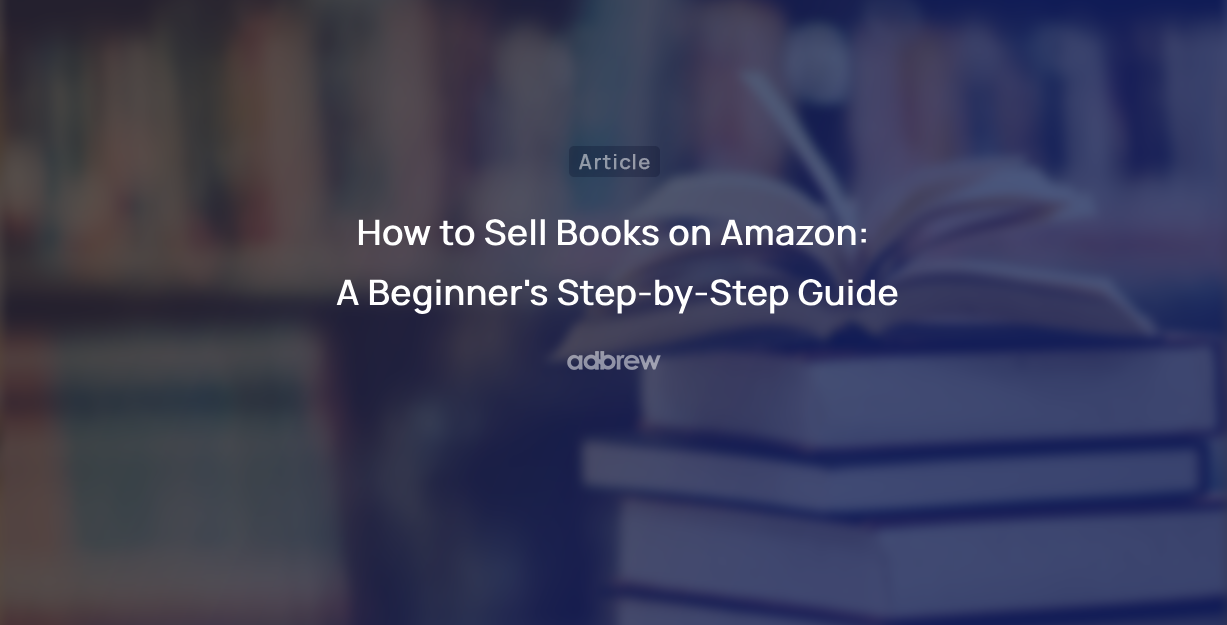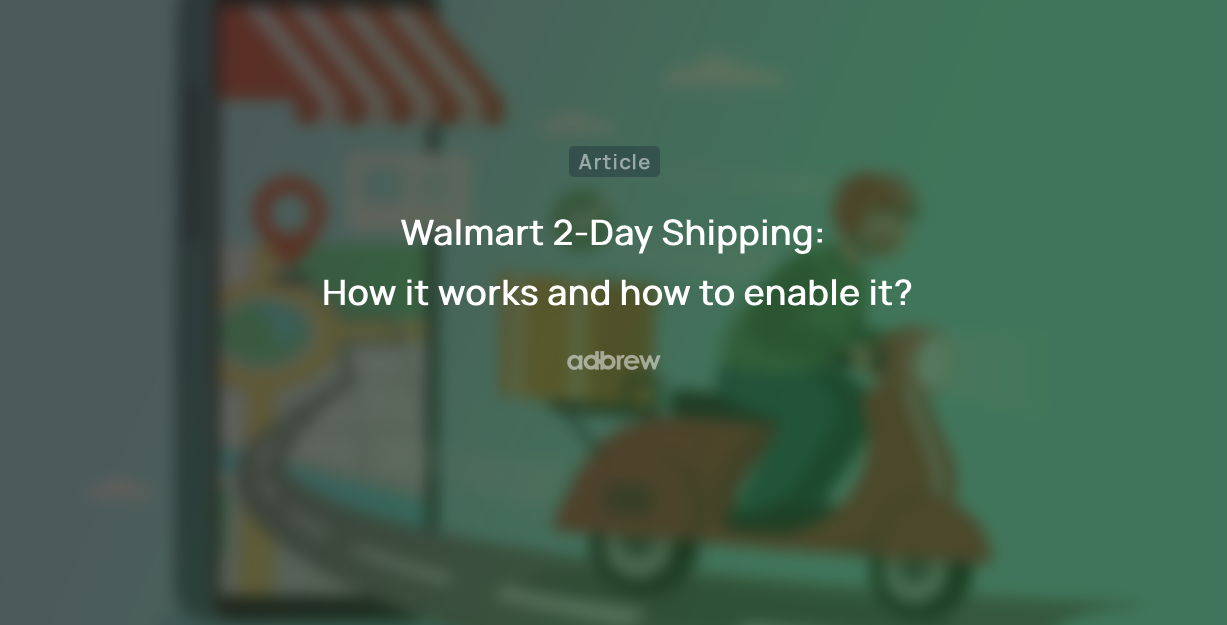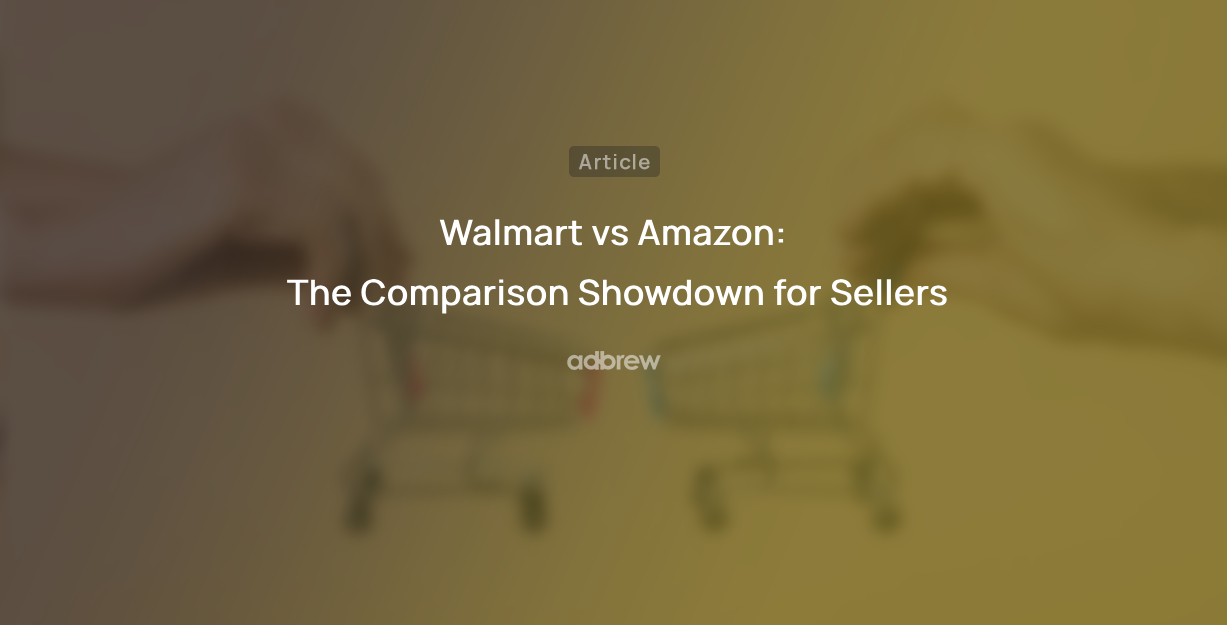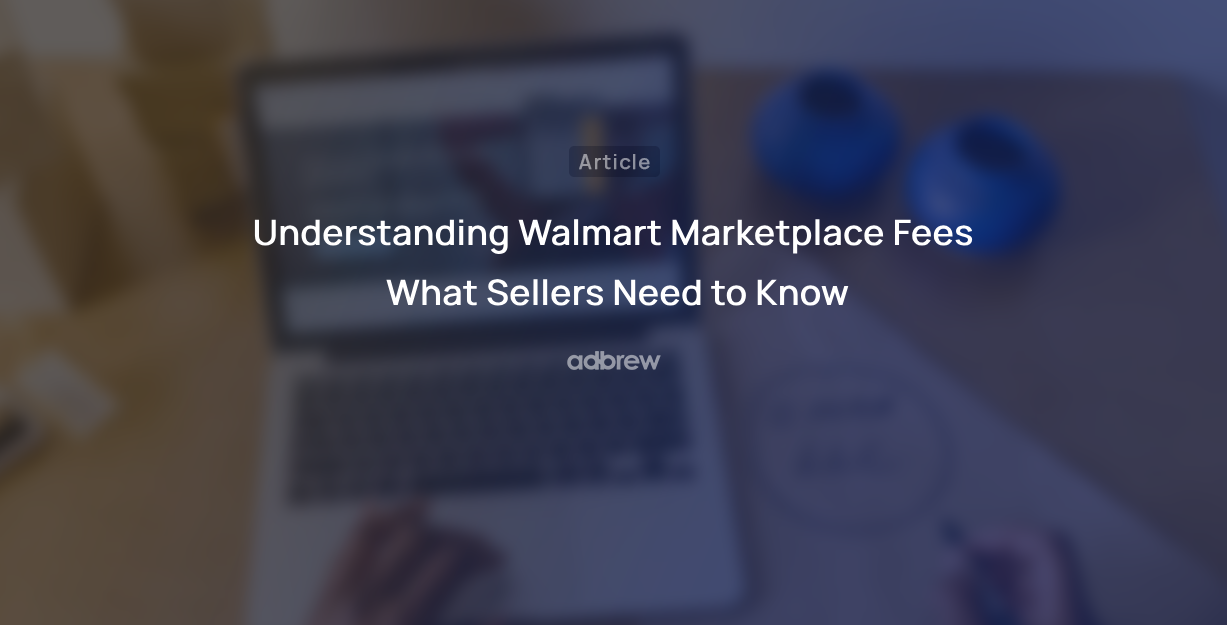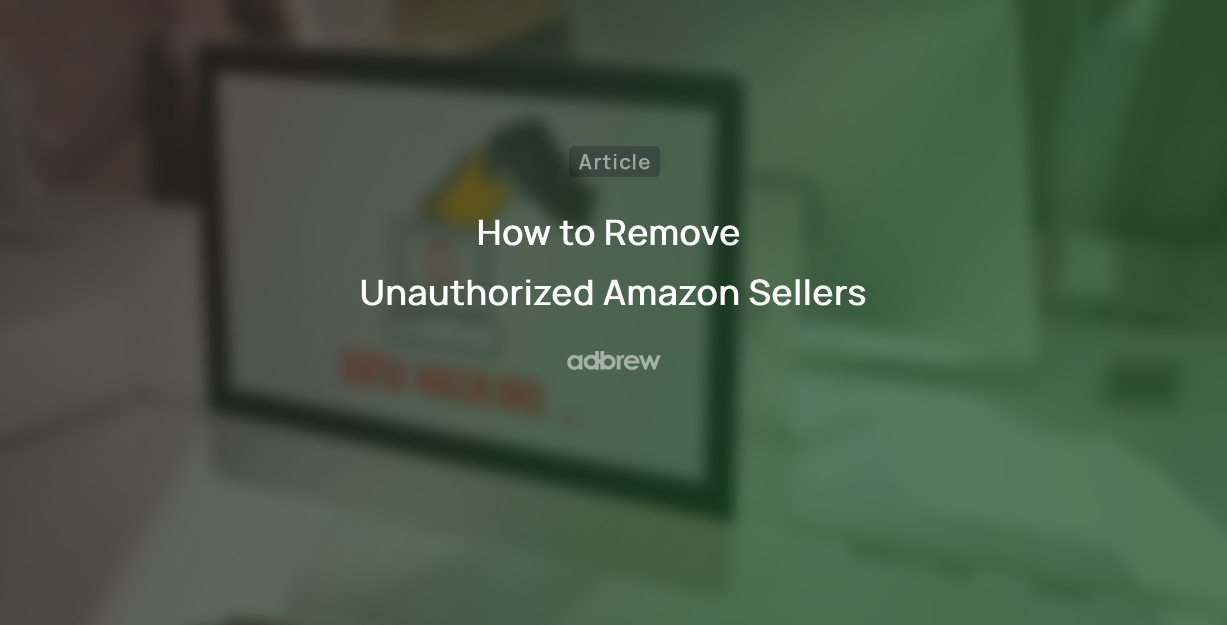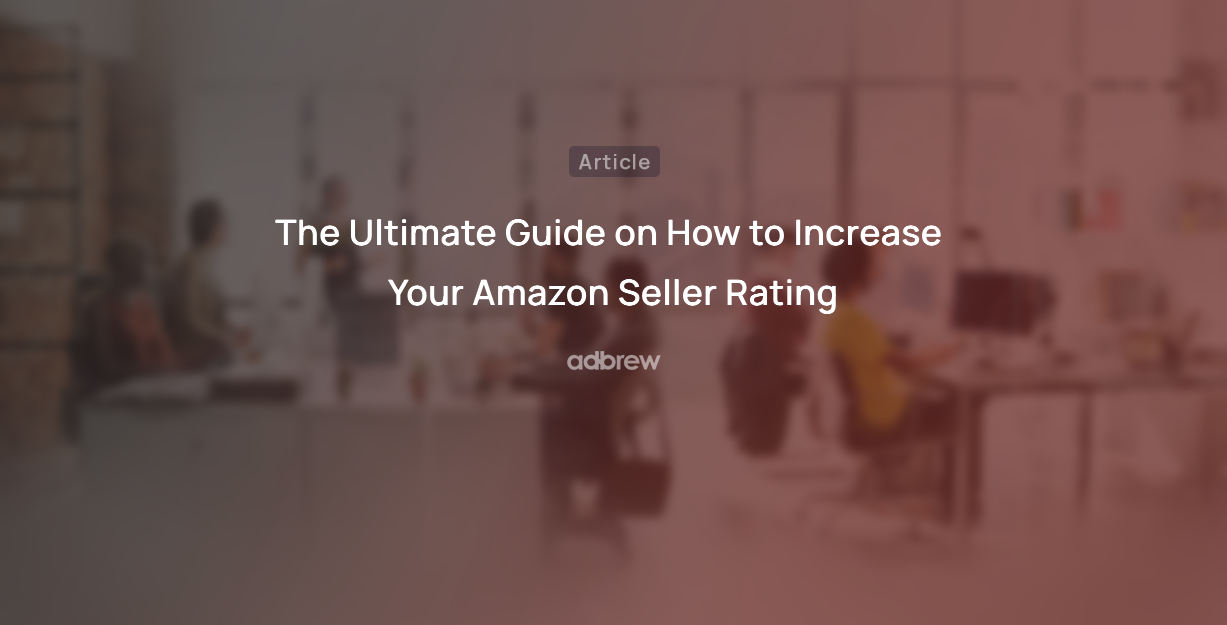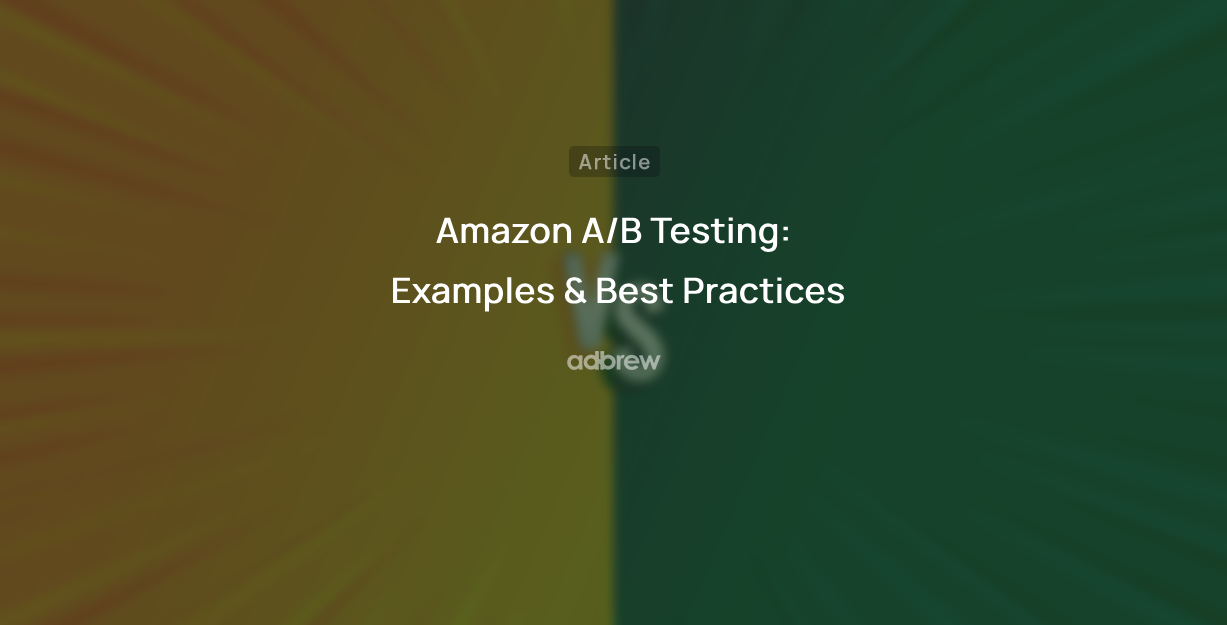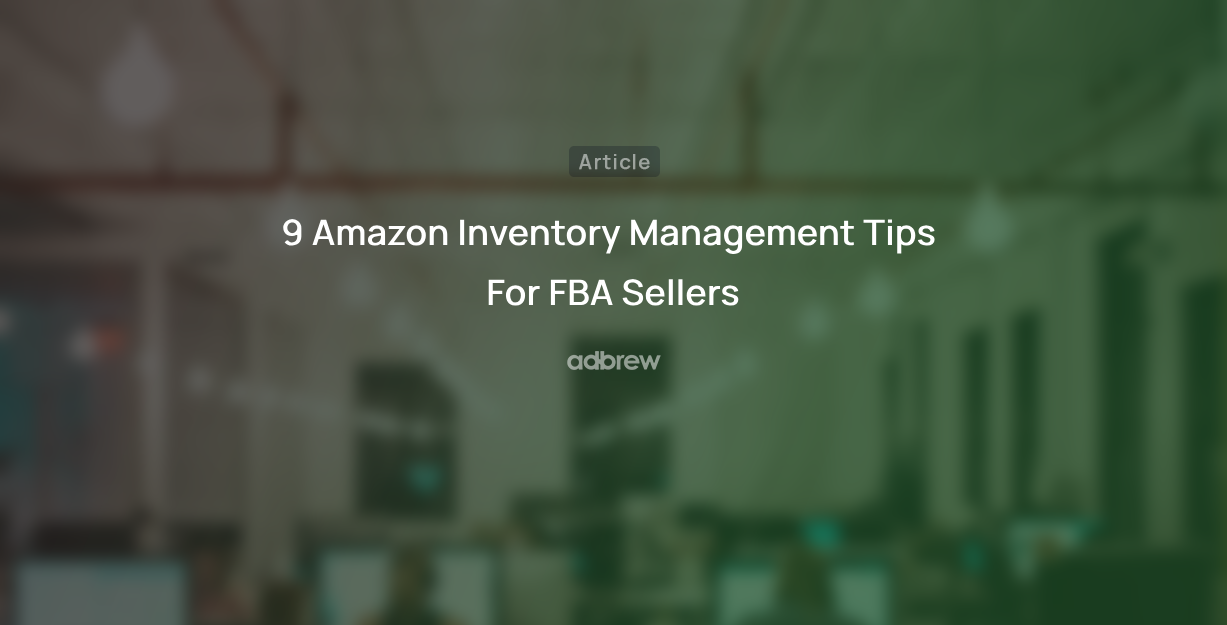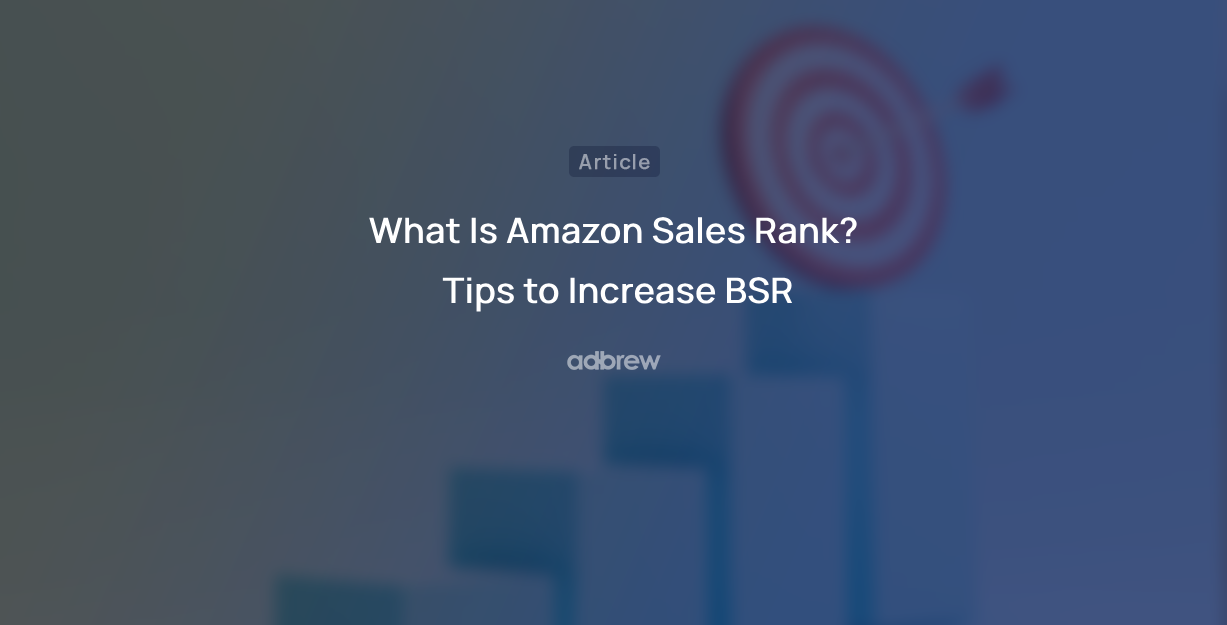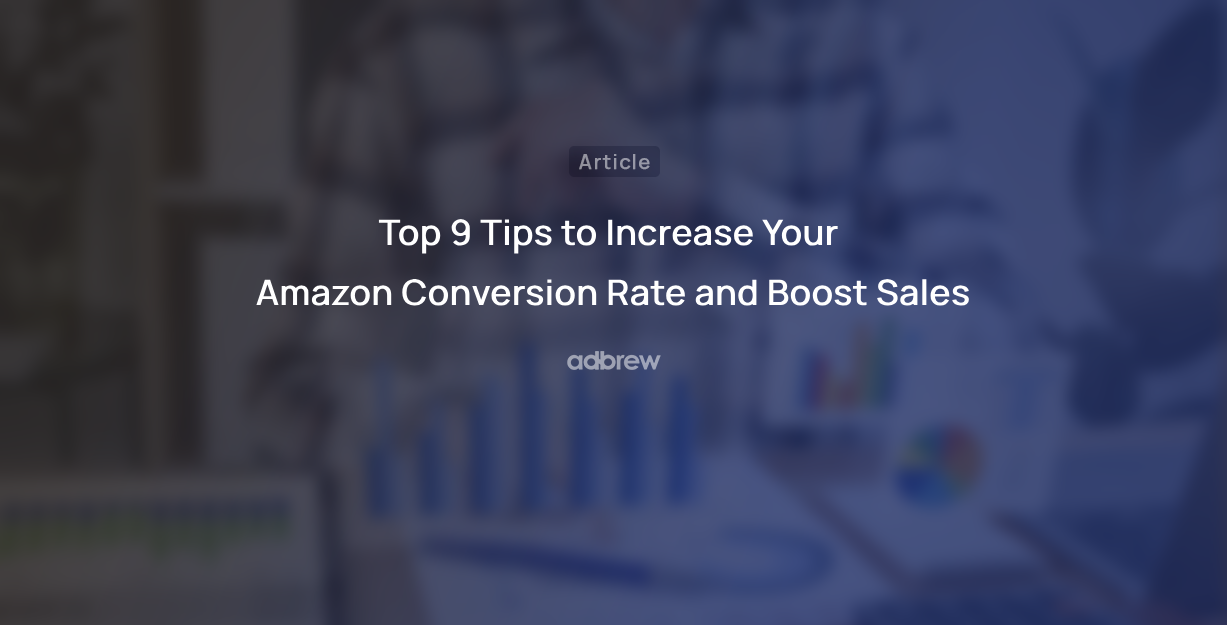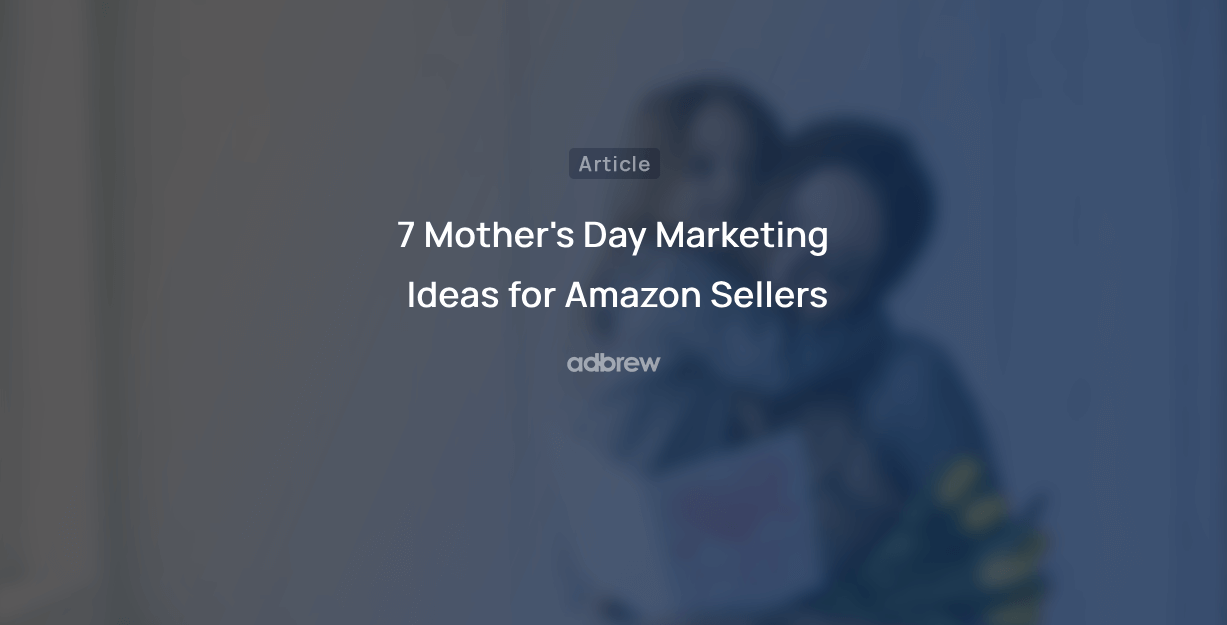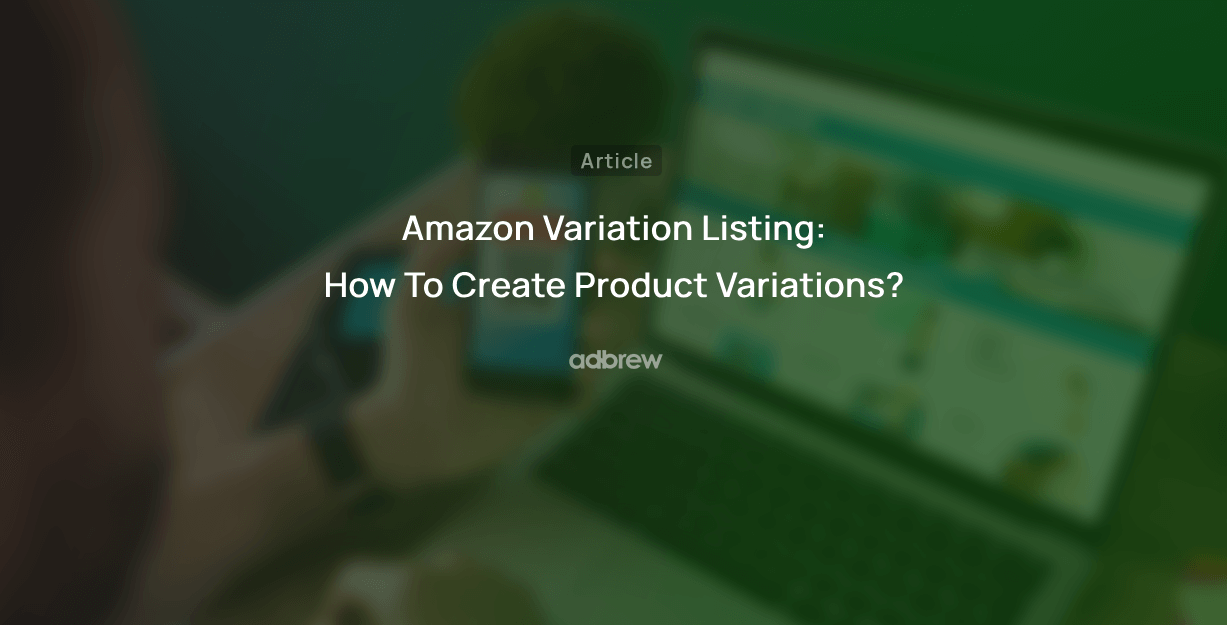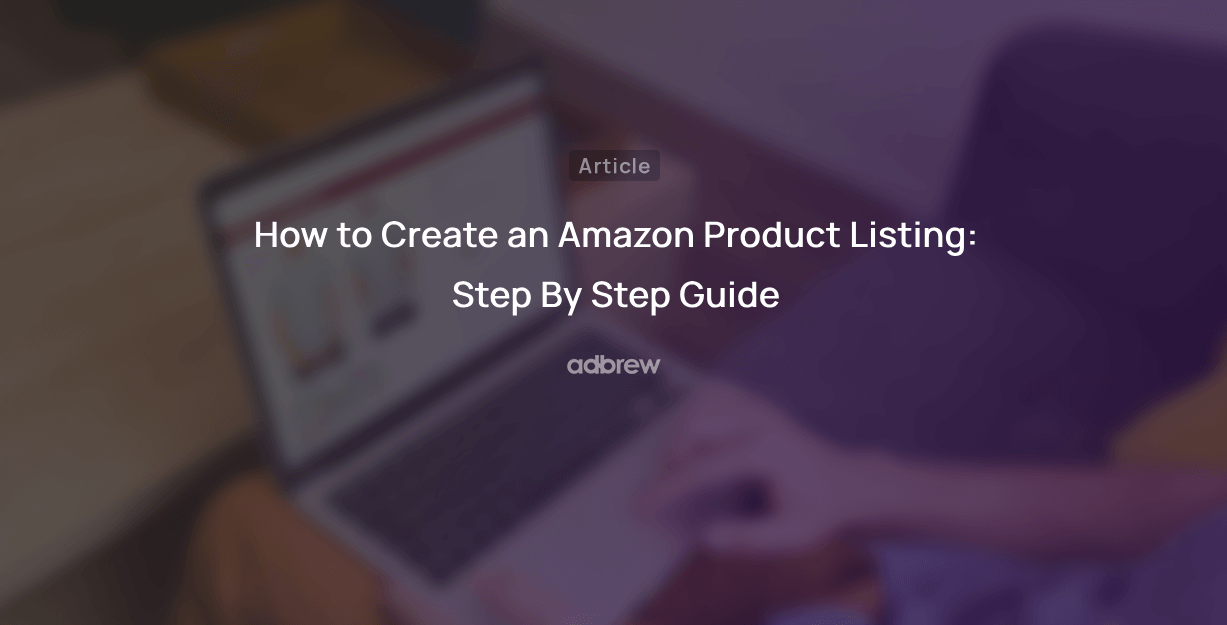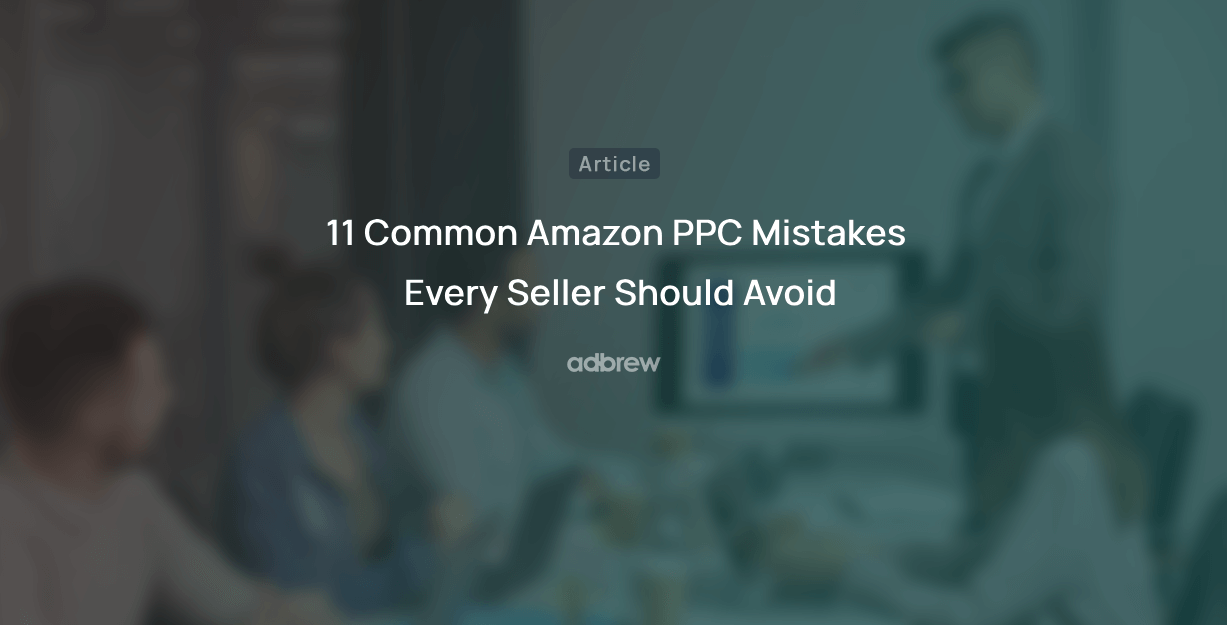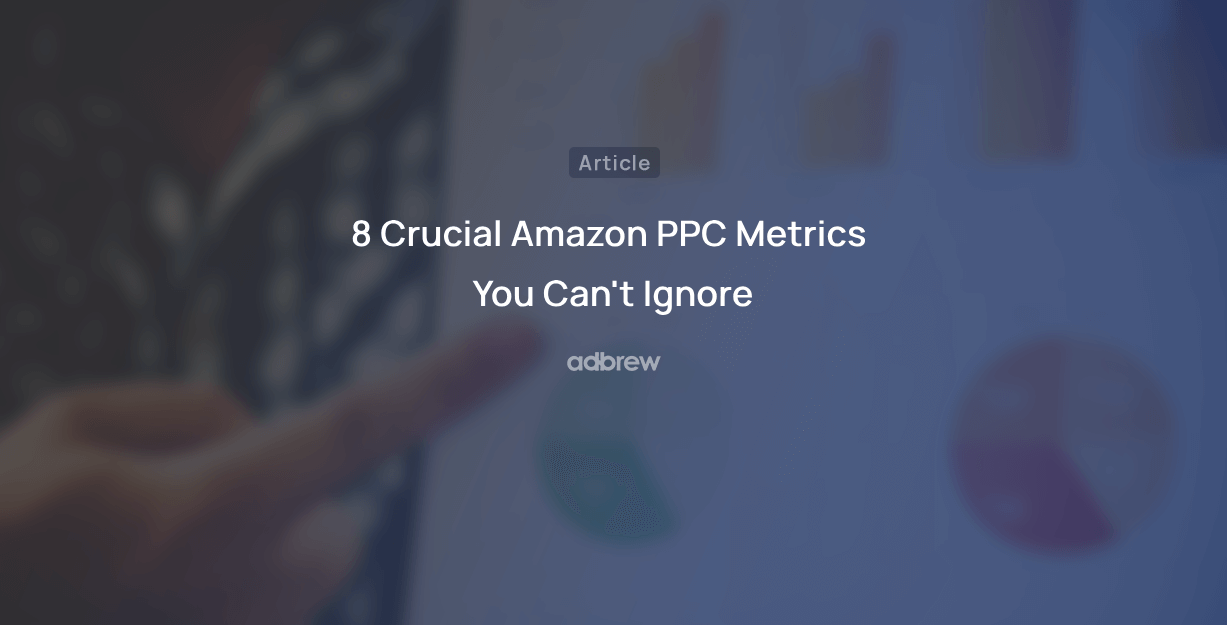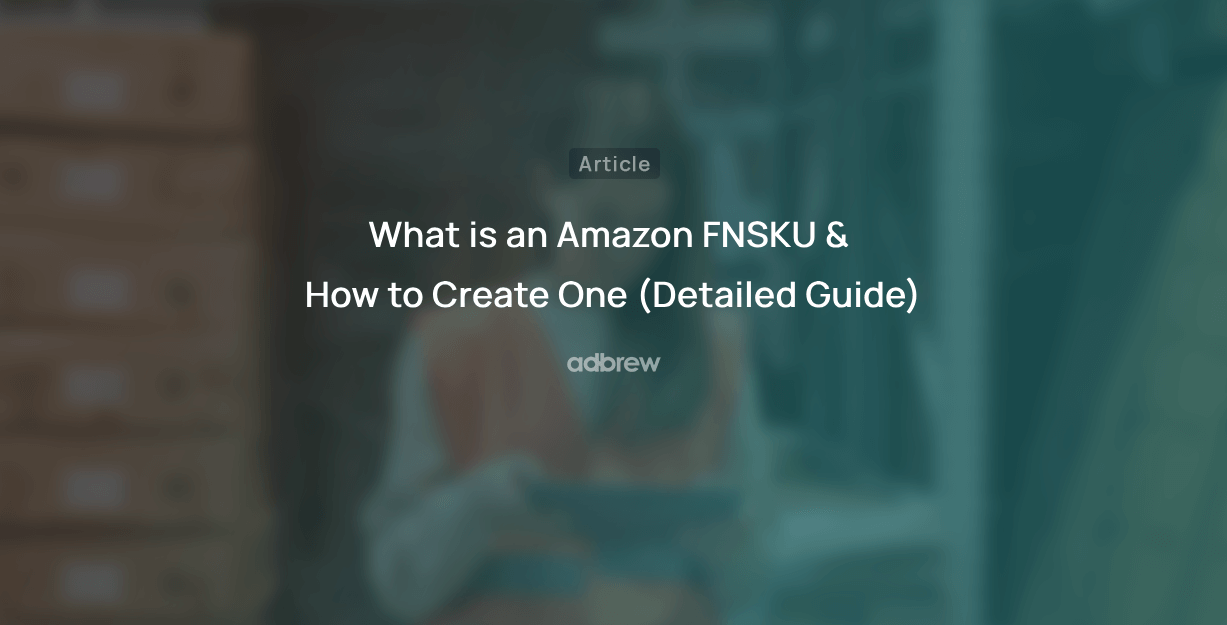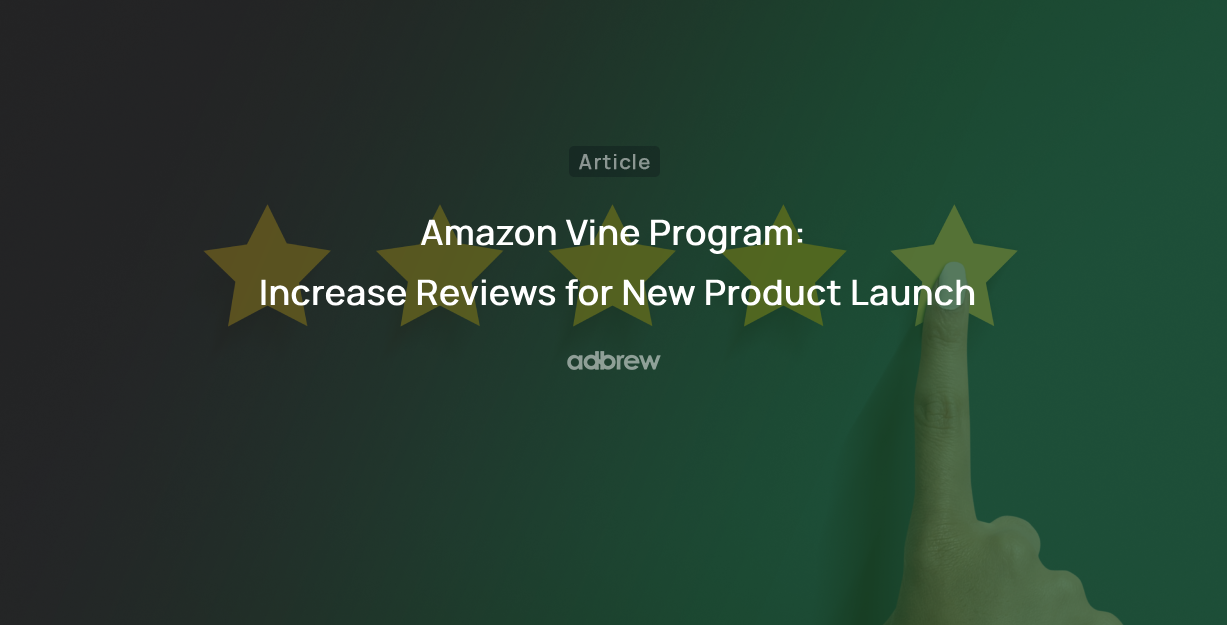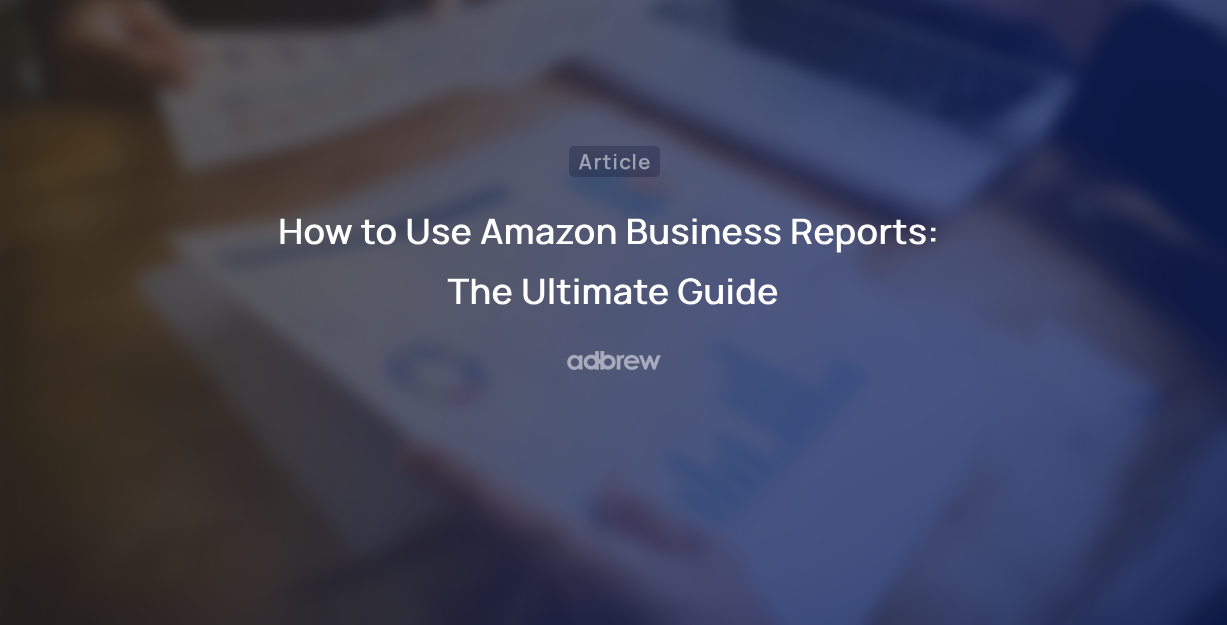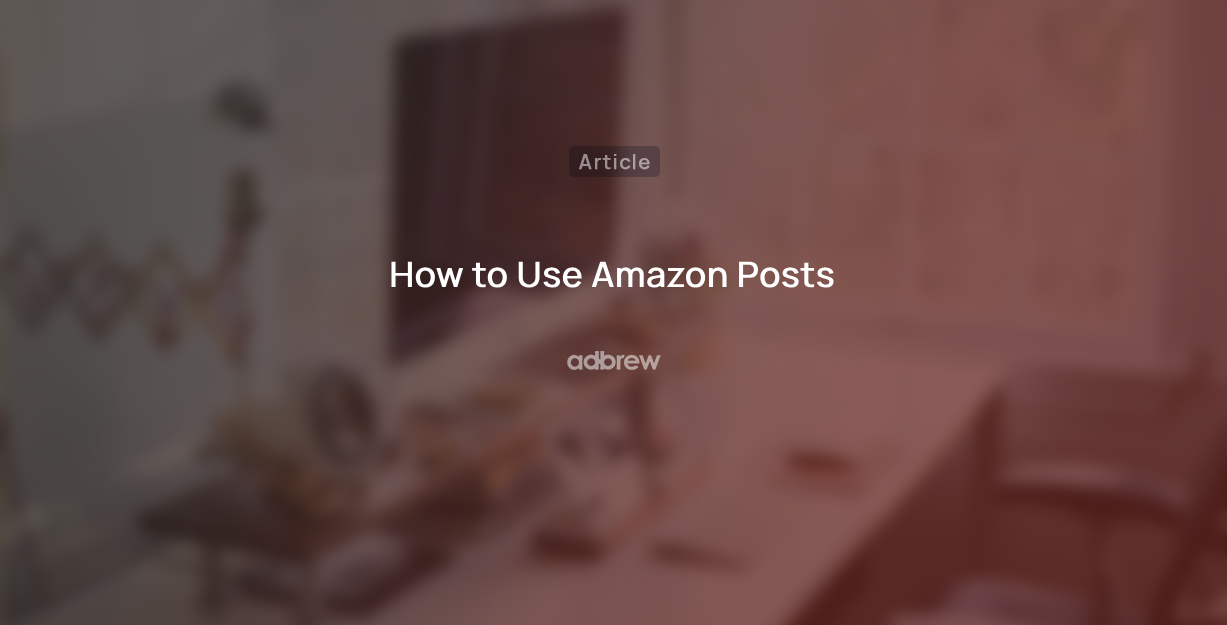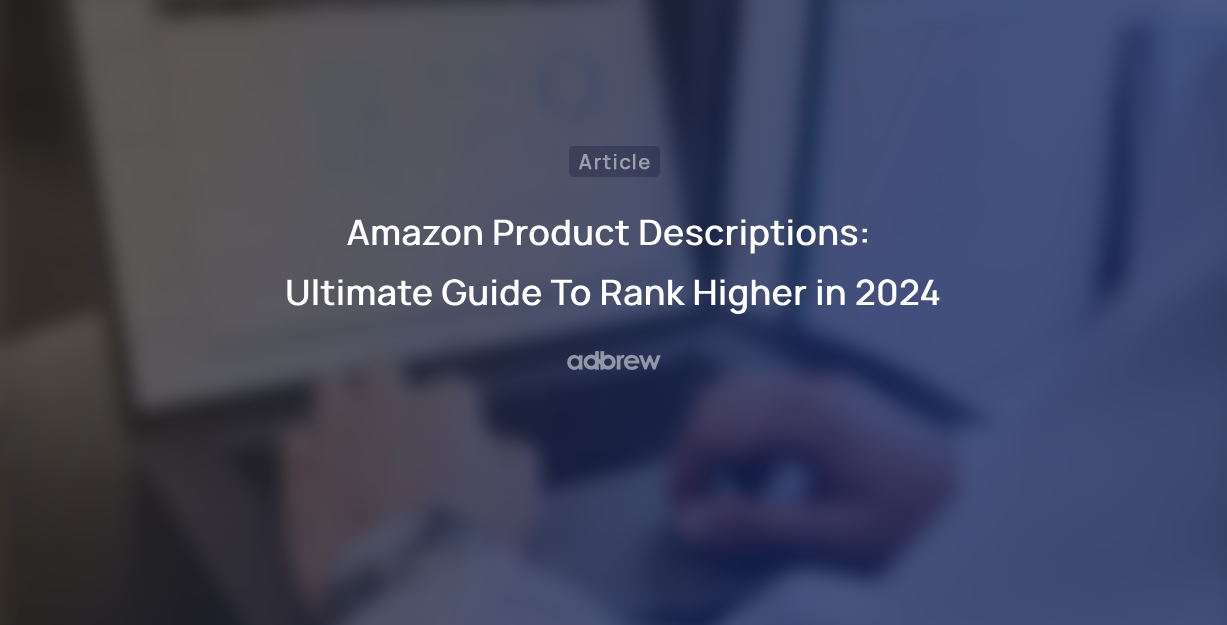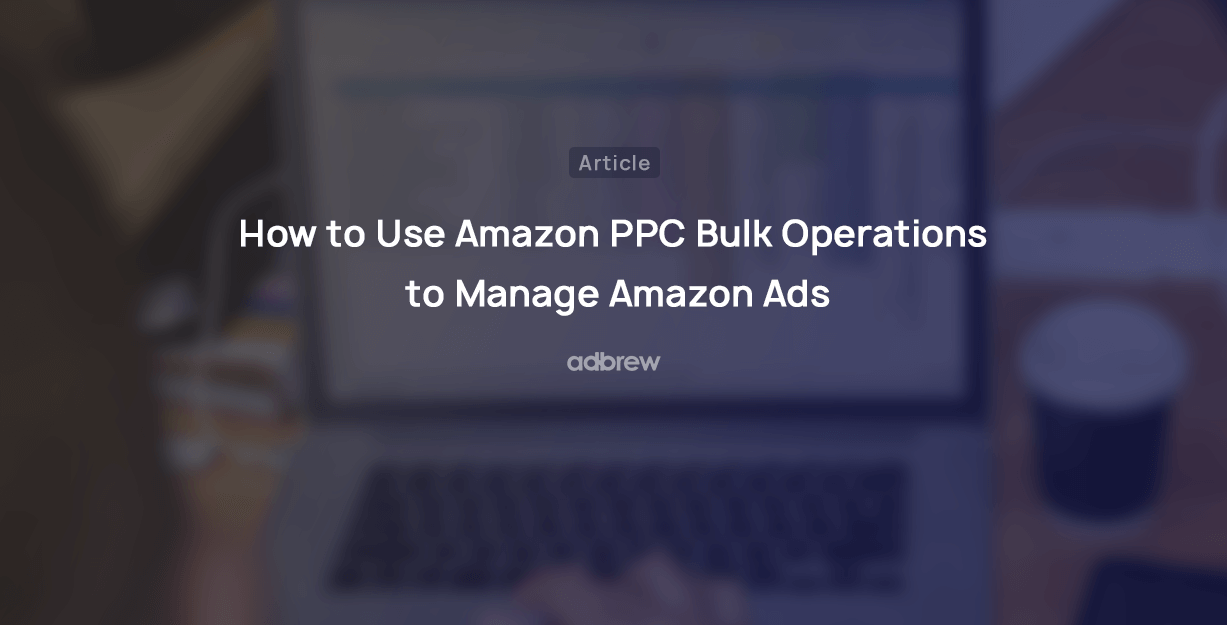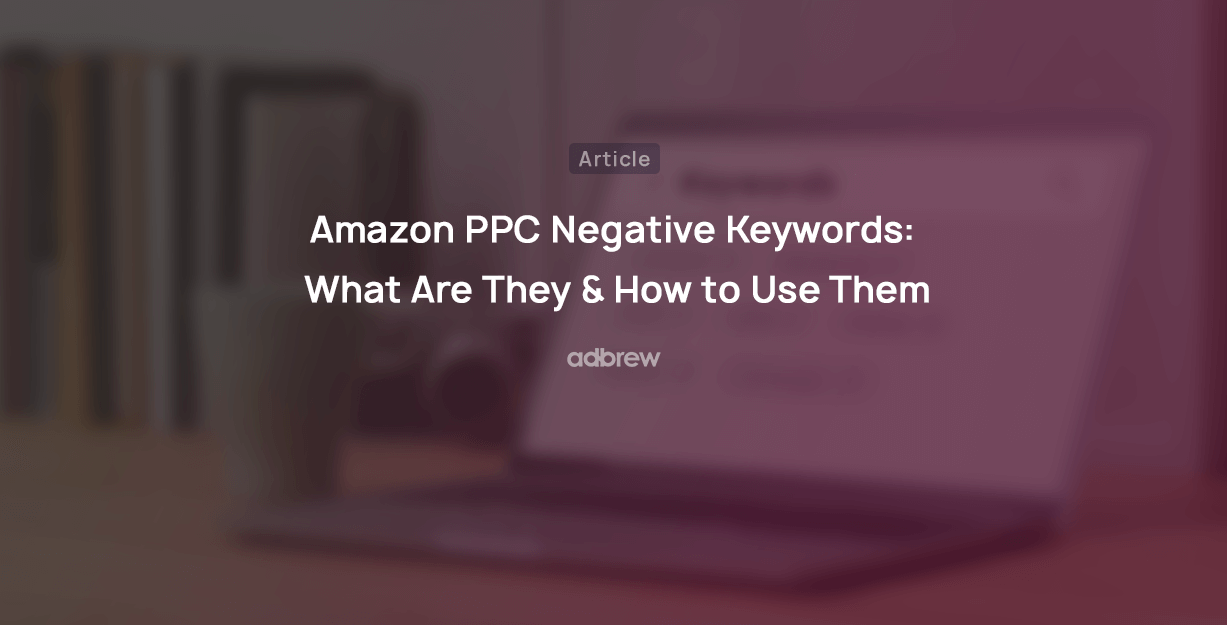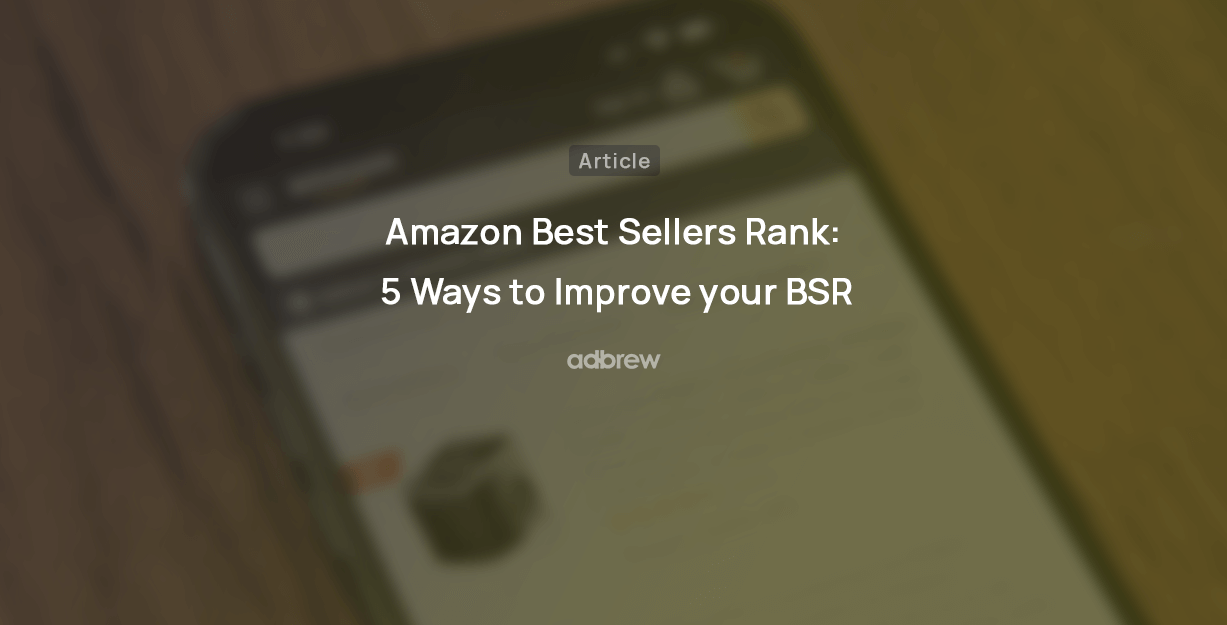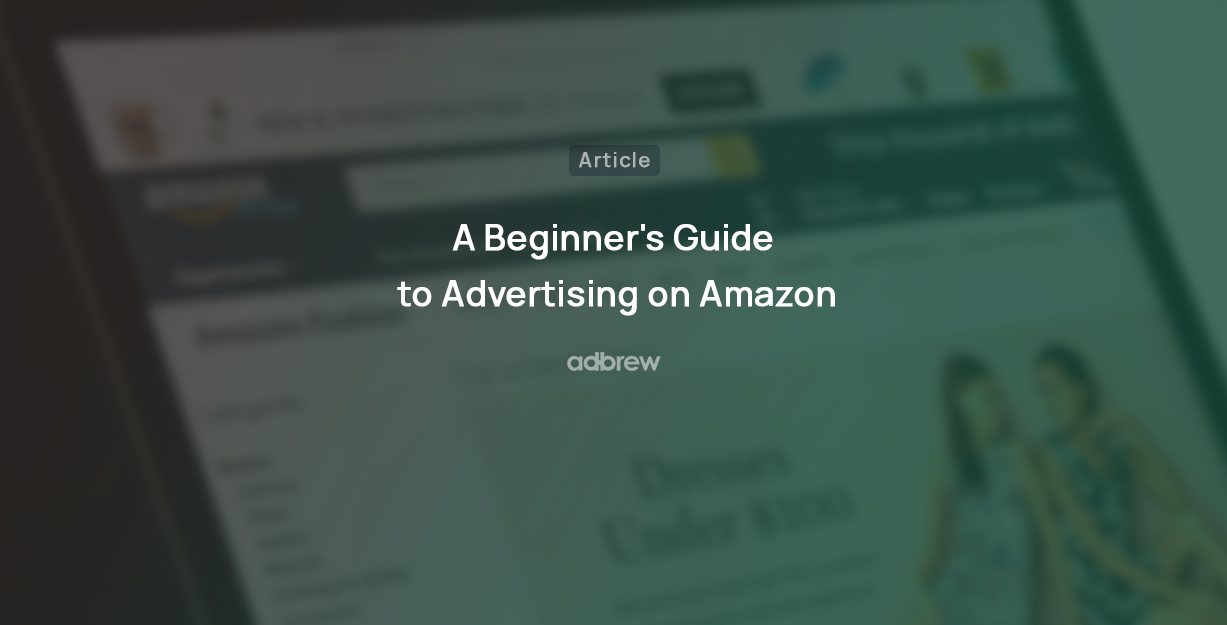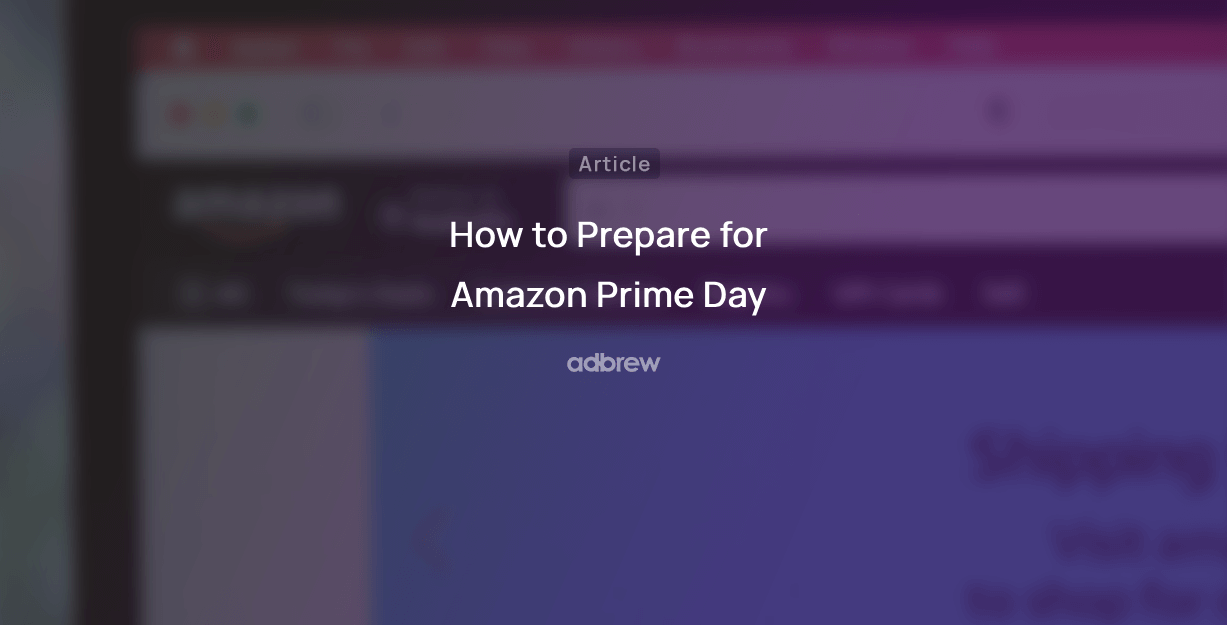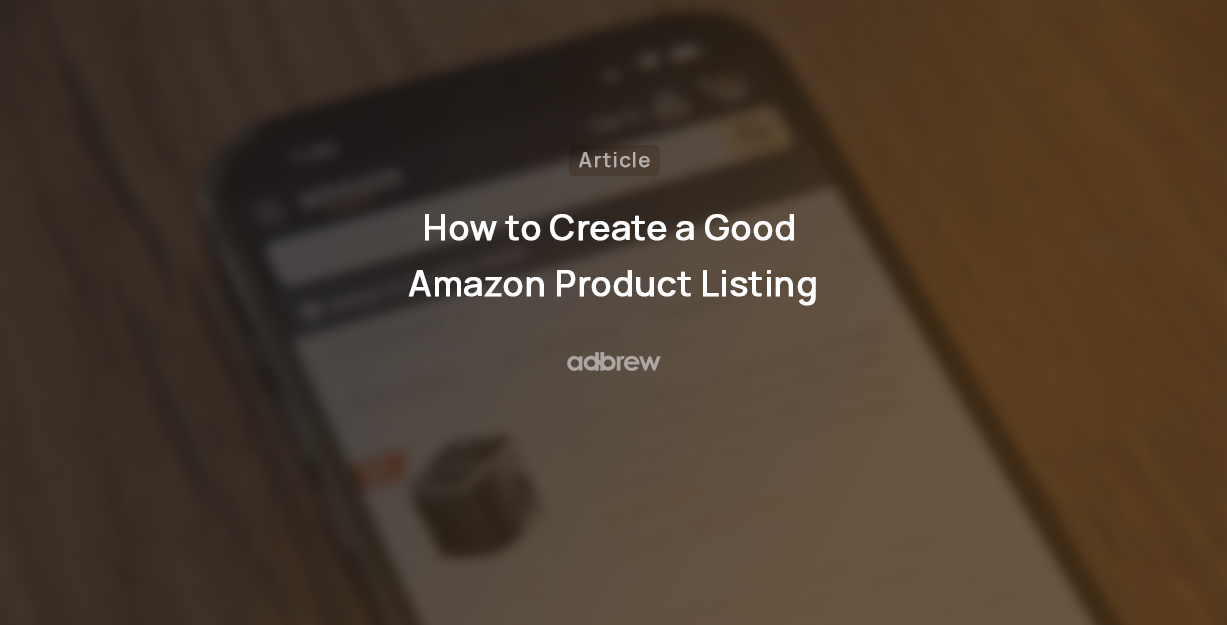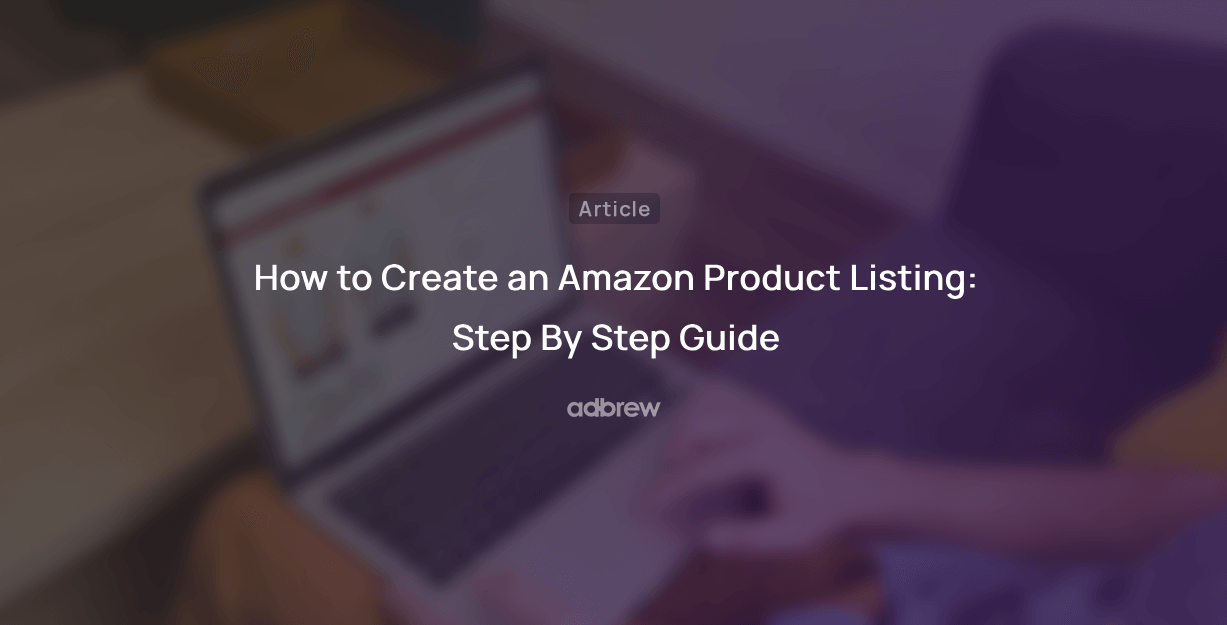
With Amazon boasting over $575 billion in retail sales for 2023, it’s no wonder so many sellers flock to its marketplace.
But for newcomers, navigating the process of creating an Amazon product listing can feel overwhelming. From product details to category selection, there’s a lot to consider.
Don’t let listing creation hold you back! This step-by-step guide will equip you with everything you need to launch your first successful listing on Amazon.
We’ll cover essential elements, from keyword-rich titles to high-quality product images, ensuring your product gets noticed by the right audience.
Understanding Amazon Product Listing Page
When a customer searches for a particular item or product category, the search results show multiple products with similar prices, variations, sizes, and colors. Clicking a product leads to the product page, your product’s ultimate showcase.
This page contains all essential details such as product title, category, images, features, description, bullet points, and actual price.
Additionally, it provides crucial information like customer queries, reviews, and ratings. The product page is your chance to attract customers and convince them to buy.
Let’s learn how to create compelling product listings and leverage the platform’s full potential.
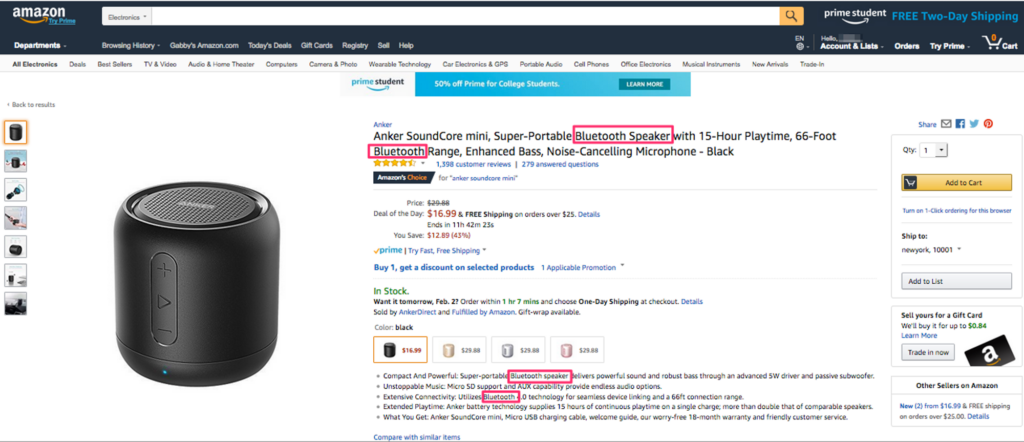
Step-by-Step Guide on How to Create New Amazon Product Listing
Before starting, if you want to create your own private-label product, you should have legal ownership, a unique product ID, and a global trade identifier number.
Here’s a step-by-step guide on how to create product listings on Amazon.

Step 1: Keyword Research
Create a thorough list of all the keywords customers can use to search for your products on Amazon before creating the product listing.
A program called the Amazon Product Opportunity Explainer is made to find profitable keywords for improving product listings on Amazon.com.
Sellers may improve their probability of success in the cutthroat Amazon marketplace by using this tool to find undiscovered possibilities and improve their product descriptions.
The steps below will help you utilize Amazon Product Opportunity Explainer to find and employ appropriate keywords for your product listings, increasing traffic to your items and your exposure.
Use Amazon Product Opportunity Explainer to find keywords by doing the following steps:
Select the appropriate category to enter the product information.
Enhance Your Keywords: Choose low-competition, high-traffic keywords.
Find the Gaps: Locate regions where there is a supply shortage.
Examine Insights from Competitors: Recognize the tactics used by rivals.
Examine Trends: Determine which items are in demand.
Utilize third-party tools for researching keywords like Ahrefs, Helium 10, and Jungle Scout to find keywords that your competitors are ranking on.
Using the Keyword Research tool, enter the seed term, filter the results by volume and relevancy, and choose the top four to five keywords to include in your listing.
In the same way, you might look for high-performing keywords by examining the listings of your rivals.

Consider both long-tail and short-tail keywords while compiling your list of keywords.
You can use as many keywords as you want for your products to increase your reach, attract customers, and boost sales.
Short tail keywords are typically brief and general terms, often consisting of one or two words.
They are broad in scope and are usually associated with high search volumes and intense competition.
For example, “shoes” or “digital camera” are short-tailed keywords.
On the other hand, long tail keywords are longer and more specific phrases that users are more likely to type into search engines when they have a clear idea of what they’re looking for.
They often contain three or more words and are more targeted to a particular niche or audience.
For example, “running shoes for women with flat feet” or “best budget digital camera under $500” are long-tail keywords.
Step 2: Log in to Amazon Seller Central Account
Now that you have the keywords let’s get the listing made.
After logging into Amazon Seller Central and opening the left sidebar, navigate to Catalog → “Add products.”
There are two choices available to you on the “Add Product” page:
To list a new product, use the first option.
To upload items in bulk, select the second option. This is very helpful for retail arbitrage and dropshipping on Amazon business models.

Step 3: Choose Product Categories and Subcategories
Give your product name and choose the categories accordingly.
Enter the term best summarizes your offering, then choose the suggested category.
Select the right category and subcategory for your goods after that. Two methods exist for doing it.
Search Method: Just look for your product type and select the category that most closely matches it.
Manual approach: The manual approach is more thorough.
Select the parent category from the provided list of categories first, and then look for subcategories for your product.
Click “Select” when you have reached your kid category completely.
If you are still determining the category that best fits your goods.
You may do product research there to learn how things are sorted on Amazon.
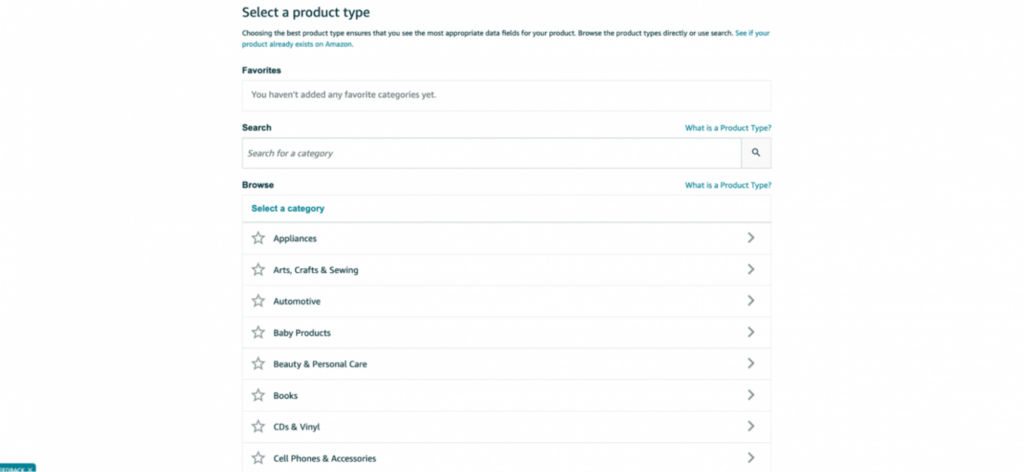
Step 4: Provide Product Information
After choosing categories, it’s time to complete the product information and create the listing.
After choosing categories, it’s time to complete the product information and create the listing.
The eight tabs on the listing details dashboard are as follows:
- Product Identity – In the product identity tab, you must enter information regarding different product variants based on size, color, etc. Then, you need to provide the item name, your product’s brand name, and a product ID.
- Vital Information – Here, you must provide specifications on the product description to describe your product in detail. You need to provide your brand story along with bullet points.
- Offer – In the offer tab, enter the details like price, quantity, fulfillment channel, and product condition.
- Product details – In this tab, enter the details about your product bundle like color, number of items to sell, and what components to include.
- Product Variations – Changes should only be made to the “Variation” tab if you offer various versions of your product, such as variations in materials, colors, or sizes. The possibilities in the variants will vary according to the various categories.
- Images – It’s crucial that your Amazon listing includes images. Customers may use the photos to assess and contrast various product aspects visually. To aid buyers in making judgments, include several photographs in the listing that showcase distinct aspects of the product and show it in use from different perspectives.
- Keywords – Here, in this tab, enter details about your target audience and subject keywords.
To create your product listing, complete the relevant fields in each tab (marked with red boxes).
These tabs are essential for the product listings on Amazon since they hold important information about your goods. The fields marked with an asterisk (*) or with a red star must be completed.
To make your listing on Amazon, click “Save and complete” once all the information has been entered.
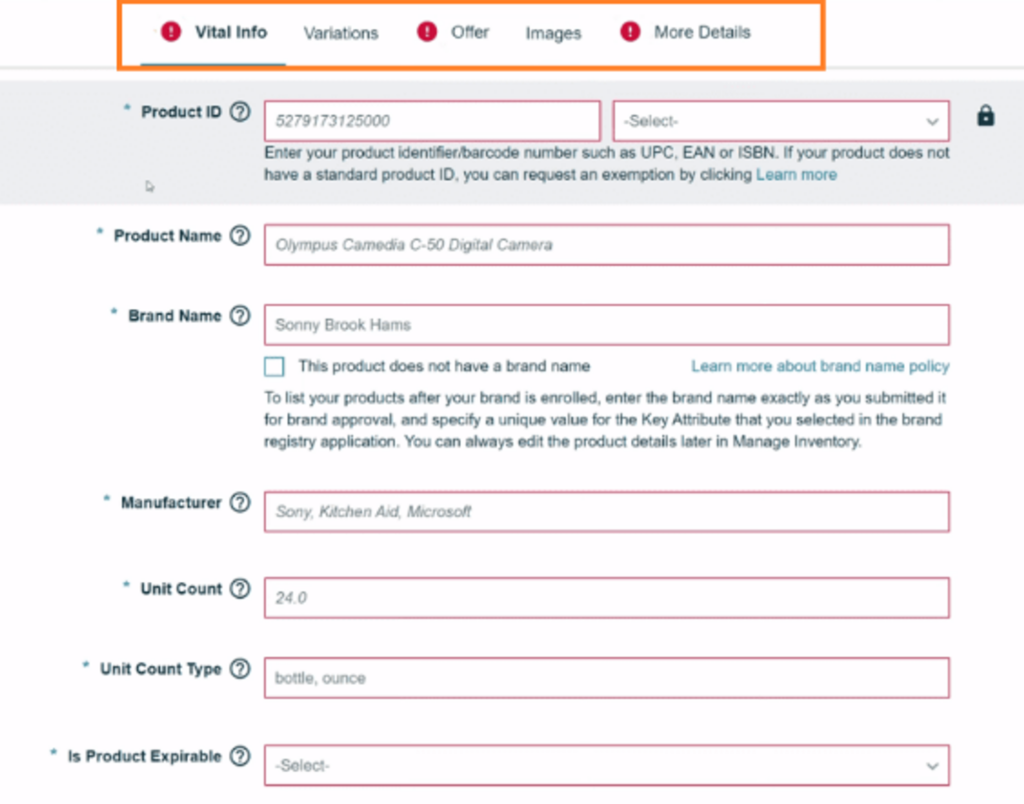
Step 5: Provide Product Details
Enter information about your product bundle on the product details tab, such as:
- The quantity of items: Indicate the number of products you are selling for each unit.
- Included elements: Name the parts that make up the product.
- Color: Please specify the product’s colour.

Step 6: Fill PIN (Product Identity Information)
Here are the details you need to fill in the product identity tab –
- Variations are a collection of related items with minor differences in dimensions, hue, etc. If you would want to display many product versions, check the box. If you don’t have any product variants or want to set up just one variation at a time and then aggregate them later, choose “no.”

- Product or Item name – The clickthrough rate (CTR) of your listing will be greatly influenced by your product name, which will appear in the search outcomes before users choose to click on it. It should also include as many pertinent keywords as possible because Amazon’s algorithm uses them to assist in ranking your listing. The goal should be to balance the needs of the algorithm and the client as much as possible.
- Brand name – Enter the name of your brand here. If Amazon determines the trademark is not registered, they may request proof from you. You may upload pictures of your goods with your brand name on them together with their packaging. Registering your Brand on Amazon increases your ranking and conversion rate, so if you’re serious about running an online store, do it now.
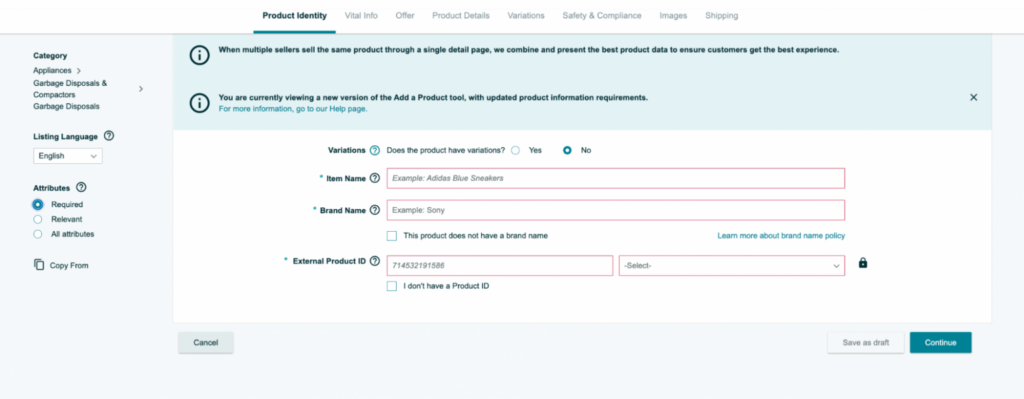
Step 7: Provide Your Product Offer Details
Enter the following details in the offer tab:
- Price: Establish the selling price of the product. You can differentiate your product price from the manufacturer’s suggested retail price on Amazon listing and create a new product ID.
- Quantity: Indicate how many things you want to put up for sale.
- Channel of Fulfillment: Selecting the order fulfillment method is now necessary. This determines your listing status as an Amazon FBA or FBM vendor. There are two choices available to you:
- Fulfilled by Amazon: For a nominal price, Amazon handles all shipping and customer support.
- Merchant Fulfilled: You are in charge of both shipping and client support.
- Condition: Select whether you want to offer the product as new, used, or in another condition.
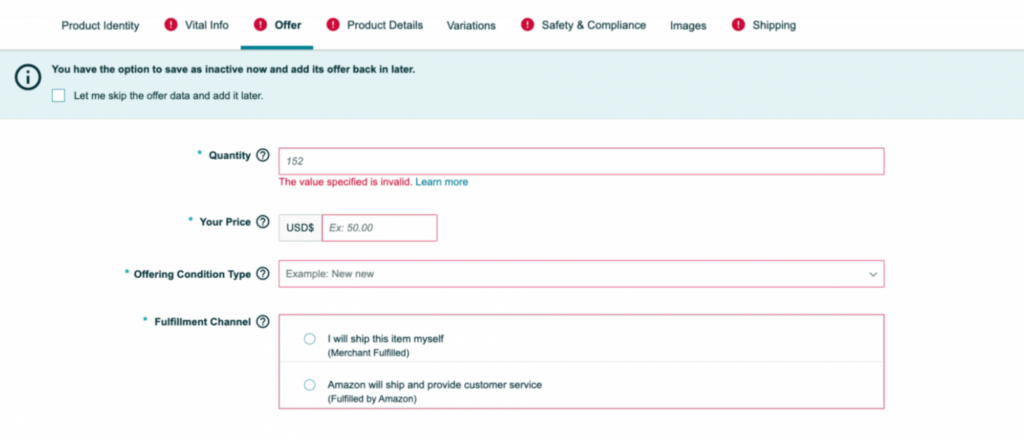
Step 8: Provide Product Details
Enter information about your product bundle on the product details tab, such as:
- The quantity of items: Indicate the number of products you sell for each unit.
- Included elements: Name the parts that make up the product.
- Color: Please specify the product’s color.

Step 9: Adding Keywords
Adding keywords comes once you provide your product details. You can add keywords in the search terms row.
When they use search engines to look out for products, these relevant keywords will navigate them to their desired products.
Keywords play an important role in providing vital info about the key product and features when customers search for the same product in the listed listing with a competitive price.

Complete the following two fields on the “Keyword” tab:
- Target Audience: Specify who the product is intended for.
- Subject Keywords: The most crucial field in your listing is this one. Another name for them is backend keywords. These keywords help make your items easier to find and enable you to write a product listing that is easy to read while ensuring the listing is indexed for all the necessary keywords.
Step 10: Adding Your Product Images
It’s crucial that your Amazon listing includes images. Customers may use the photos to assess and contrast various product aspects visually.
To aid buyers in making judgments, include many images in the listing that showcase distinct aspects of the product and show it in use from different perspectives.
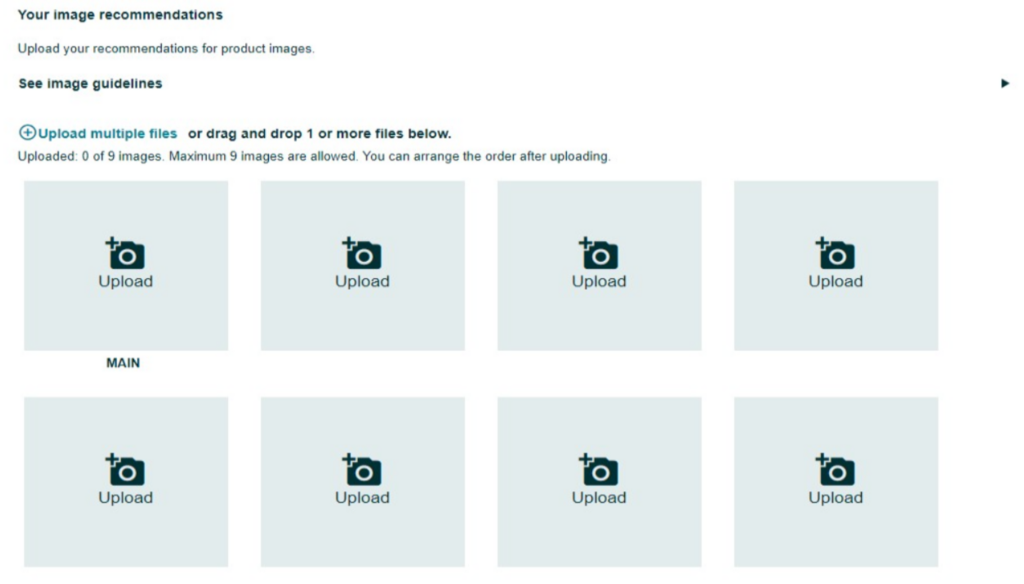
The following points can help you add product images:
- There must be a minimum of one product image on each detail page.
- Ensure the product takes up at least 85% of the picture space, and keep the image’s backdrop white.
- However, try to include one video and six photos in the listing for the best results.
- Make sure the pictures are readable, educational, and visually appealing.
- To guarantee the best quality, keep the image’s size at 500 × 500 or 1000 x 1000 pixels.
Step 11: Save and Launch Your Products
And that’s it! You’ve finished adding all of the details. It’s time to give it a once over and click “Save and Launch” to start building your product listing.
Reasons Why Your New Product Listing is Not Visible
If your listing is not visible on Amazon, it may annoy any seller. This problem may be caused by several circumstances, including:
- Low-quality product: Amazon may remove your goods from sale if they continuously earn bad ratings or comments because of their low quality.
- Violating Amazon’s guidelines: Your items will be removed from the marketplace if you break any of the company’s rules or terms of service. A few instances of breaking the rules are listing forbidden goods, faking customer testimonials, or committing fraud.
- Incomplete product info: Amazon may remove your items from their listing if the information you offer about them is false or deceptive.
- Safety issues: To safeguard its consumers, Amazon may remove your goods from sale if it risks their safety.
- Intellectual property violation: Amazon will remove your goods from its listing if it violates another firm’s intellectual property rights, including trademarks or copyrights.
- Listing products that are prohibited: Items may be removed from Amazon if you list goods that are forbidden or limited by the company’s regulations.
- Selling counterfeit goods: Your products might be removed from Amazon’s listing, and your account could be banned or canceled if the company finds you are selling imitations.
Bulk Product Listings on Amazon
If you have many products to list on Amazon (let’s say 100), then it will take a lot of time to list them on Amazon individually.
Amazon has a fantastic feature called bulk listing that allows you to create multiple product listings. Here are the steps to follow –
- To add numerous items, use the “I’m uploading a file” option on the Seller Central “Add Product” page.
- Save the Excel template according to your needs. The following scenarios are covered by the templates that Amazon offers:
- List the items that are now available in Amazon’s inventory.
- Enumerate goods that aren’t now available on Amazon.com.
- Modify the amount and pricing.
- Update the product’s specifications.
- Uncertain if the goods are listed in Amazon’s inventory
- Create a template after selecting the product category and the choice that best fits your needs.
- Fill out every spreadsheet column after downloading the template, then submit it to the Seller Central dashboard.
- Additionally, you may use the “Spreadsheet Upload Status” option to see the upload progress of your items.
Listing Already Existing Products
If you want to run a resale business for your products on Amazon, here are some important points to consider.
The product you wish to sell may already have an active Amazon product listing.
It’s easy to add your goods to an already-existing listing.
Step-1: Navigate to Seller Central’s “Add products” page. You can use the product name, ISBN, EAN, UPC, or ASIN number to find the product you wish to list.

Step 2: Select if your goods are brand-new, reconditioned, or used.
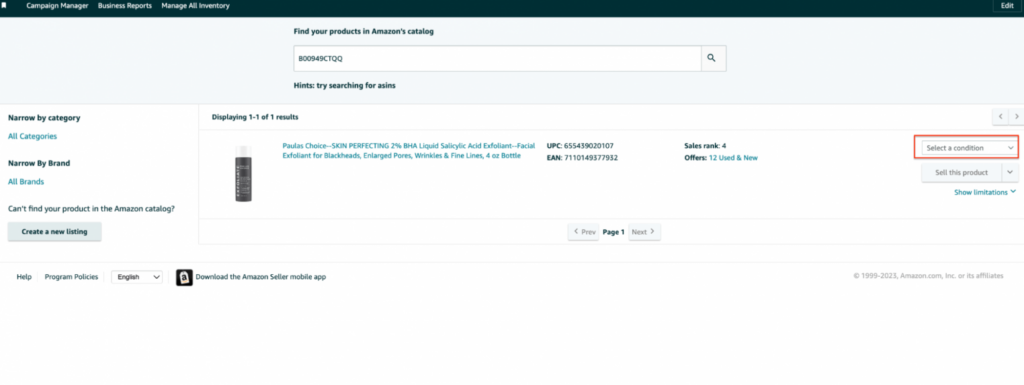
Step 3: Select “Sell the product” to access the backend of the listing.

Step-4: To finish creating your product listing, input the selling price, pick the product condition, select the fulfillment method, and click “Save and complete.”
Conclusion
Once you know all of Amazon’s policies, listing products is simple. You can view your listing almost instantly when Amazon assigns it a unique ASIN.
You may easily choose some tools and organize your product listing if you still have trouble. All company models can benefit from these technologies, albeit some can use them more.
Automating inventory management can also help you prioritize more essential tasks, like selecting the best goods to offer on Amazon, by saving you time.
Next, you should concentrate on obtaining customer reviews after setting up your product listing.
Asking your consumers is one of the finest ways to obtain product reviews.
FAQ - Amazon Product Listing
1. What is required to create an Amazon product listing?
You need a seller account, product details like title, description, bullet points, images, price, and an assigned product category. A UPC or ASIN is also typically required.
2. How do I optimize my product title?
Include relevant keywords, product name, brand, key features, and variations like size or color. Keep it concise and within Amazon’s character limits.
3. What are the essential elements of a good product listing?
A good listing includes an optimized title, detailed bullet points, a compelling product description, high-quality images, relevant keywords, and competitive pricing.
4. How can I improve my product’s visibility in Amazon search results?
Use relevant keywords in the title, bullet points, and description, and select the most appropriate category and subcategory for your product.
5. Can I edit my product listing after it goes live?
Yes, you can edit your product title, description, bullet points, and other details through the Seller Central dashboard. Changes may take time to reflect.
Recent Posts
Take your Amazon PPC advertising to the next level

Related Blogs
Running Amazon ads with an empty shelf? You might as well be burning cash. Many sellers focus on optimizing bids, […]
In today’s competitive digital landscape, growing your eCommerce brand requires more than just a standalone website or a single marketplace […]
Are you an Amazon seller looking to offload excess inventory or seasonal items? The Amazon Outlet program might be just […]
Turning your bookshelf into a source of income has never been easier, thanks to Amazon. If you have books collecting […]
If you’re an Amazon seller, encountering an account suspension or policy violation can be a significant setback. But with the […]
Introduction Amazon dropshipping is an increasingly popular way to run an e-commerce business without the need to store or ship […]
Introduction The Amazon Influencer Program is a great way for content creators to turn their influence into earnings. This program […]
Introduction Amazon Kindle Direct Publishing (KDP) is a platform that allows authors to self-publish their work as ebooks or print […]
Selling on Amazon offers many opportunities for businesses, but it’s essential to understand the costs involved with Fulfillment by Amazon […]
Walmart is quickly becoming a popular platform for brands and sellers to connect with more customers. One way to boost […]
In today’s competitive retail landscape, reaching the right audience at the right time is crucial for success. Walmart’s Demand Side […]
In today’s fast-paced eCommerce landscape, shoppers demand speedy delivery. Walmart has responded by offering 2-day shipping, giving sellers on the […]
Running successful Walmart advertising campaigns takes more than just setting them up—it requires ongoing optimization. A Walmart PPC (Pay-Per-Click) audit […]
Are you ready to tap into the massive potential of Walmart Marketplace? With millions of daily visitors and a loyal […]
In the world of e-commerce, Amazon and Walmart reign supreme, dominating the retail landscape. These two giants offer vast opportunities […]
Are you a brand owner struggling to maintain control over your products on Walmart? The Walmart Brand Portal is here […]
Are you dreaming of a passive income stream from your Walmart store? The allure of an automated Walmart store with […]
Are you a seller looking to tap into the massive market of private-label brands? Walmart, one of the world’s largest […]
Tired of your Walmart products getting lost in the shuffle? In this blog post, we’ll dive into the essential strategies […]
Ever wondered why some Amazon sellers seem to have a magic touch with product bundles? It’s not luck—it’s strategy. Bundling […]
If you’re a Walmart seller looking to grow your business through retail media, Walmart Connect could be a game-changer. But […]
If you’re an Amazon seller, you may have noticed a portion of your inventory marked as “reserved” without knowing exactly […]
Have you ever wondered what managing your own Amazon orders is like? Switching from Fulfilled by Amazon (FBA) to Fulfilled […]
Walmart Marketplace offers an exciting opportunity for sellers to reach a vast audience by listing their products on Walmart’s platform. […]
Selling products on online marketplaces has become a vital strategy for businesses to reach more customers. If you’re looking to […]
Are you a Walmart seller aiming to improve your visibility and sales? In this blog, we will explore Walmart SEO, […]
As an Amazon brand owner, maintaining control over your product listings is essential to protect your brand’s reputation and customer […]
Improving your sales on Walmart starts with understanding how to consistently win the Buy Box. Securing this position can make […]
Are you an Amazon seller struggling to increase your rating? A high seller rating is crucial for attracting new customers […]
As an Amazon seller, providing the best customer service is paramount to maintaining a positive customer experience. One key metric […]
If you’re an Amazon seller and curious about Amazon IPI score and its impact on your business, this blog post […]
Introduction Starting an Amazon subscription box business presents a unique opportunity to tap into the growing trend of curated, recurring […]
Thinking about using Fulfillment by Amazon (FBA) to sell on the Amazon marketplace? Awesome! But before you box up your […]
Thinking about using Fulfillment by Amazon (FBA) to streamline your Amazon business? While FBA offers a convenient way to store […]
For FBA sellers, the Amazon Buy Box is the holy grail of product visibility. But with constant algorithm updates and […]
Have you ever wished you could offer customers pre-made packages of complementary products without the hassle of physically bundling them […]
Have you ever wanted to create a more branded and engaging presence for your products on Amazon? An Amazon storefront […]
Are you storing items on Amazon for a while? If so, it’s important to be aware of Amazon long term […]
When selling products on Amazon, it is crucial to follow their packaging requirements, rules, and guidelines. Proper packaging ensures that […]
Amazon A/B testing can significantly enhance your product listings and boost sales. This method, also known as split testing, involves […]
Have you ever browsed Amazon and stumbled upon a product with a little blue badge that reads “Amazon’s Choice“? It […]
Amazon FBA vs FBM needs to be explored, when we ship products and handle orders while selling on Amazon. With […]
Ever feel like you’re missing something in your Amazon PPC Search Terms report? You might be! Sure, they show what […]
Amazon can be a fantastic platform to reach new customers, but keeping your virtual shelves stocked can get tricky. That’s […]
Navigating Amazon as a new seller can be tough, but there are tools and programs available to help such as […]
Have you ever scrolled through an Amazon search result page and noticed product recommendations nestled alongside the standard listings? These […]
Finding time for yourself while selling on a competitive marketplace like Amazon can be challenging. As a seller, your main […]
Starting an E-commerce business has become quite easy with Amazon, but it also brings heavy competition. Millions of Amazon sellers […]
As an Amazon seller, you know the importance of getting your products seen. But with millions of listings, how do […]
Ever scrutinized an Amazon product page and noticed the cryptic “Sales Rank”? Wondering what it means and how it impacts […]
Millions of products compete for customer attention on Amazon’s search results page, making it tough for your brand to stand […]
Are you selling products on Amazon and looking to increase your sales? This blog is for you. We’ll share tips […]
Are you an Amazon seller looking to boost your brand visibility and profitability? Are you feeling stuck in the cycle […]
Ever wonder what drives your online shopping habits? Perhaps a captivating product description, or an eye-catching professional photo? As it […]
For any seller on Amazon, understanding the A9 algorithm is crucial for success. This complex algorithm dictates which products appear […]
Are you an Amazon seller looking to turn those single purchases into recurring revenue? Look no further than the Subscribe […]
Amazon has become a go-to platform for all e-commerce business owners to launch and scale their e-commerce brands online. But […]
Mother’s Day, a time to celebrate the incredible women who raised us, is a prime opportunity for Amazon sellers to […]
In the ever-competitive landscape of Amazon, ranking high in organic search results is crucial for driving sales. While you might […]
If you’ve ever found yourself scratching your head over Sessions and Pageviews on your Amazon business reports, you’re not alone. At […]
Amazon is a massive marketplace, attracting millions of customers with diverse needs, preferences, budgets, and mindsets for shopping. To effectively […]
With Amazon boasting over $575 billion in retail sales for 2023, it’s no wonder so many sellers flock to its […]
Advertising on Amazon through pay-per-click campaigns can significantly enhance product visibility and sales for sellers. However, mastering Amazon PPC, with […]
Have you heard of the terms copyright infringement and plagiarism? If so, then Amazon Brand gating won’t be unfamiliar to […]
If you are running ads on Amazon, you’ll come across a sea of data in your advertising console. But does […]
Have you heard of the terms copyright infringement and plagiarism? If so, then Amazon Brand gating won’t be unfamiliar to […]
In the fast-paced world of e-commerce, where shoppers are bombarded with choices, standing out on platforms like Amazon is paramount […]
Are you planning to start an Amazon FBA store? If so, you’ll encounter a unique term – FNSKU. This seemingly […]
As an Amazon seller, you understand the power of reviews. They’re the lifeblood of trust and conversion on the platform. […]
Are you struggling to get Amazon reviews on your product? Well, you are not alone! Reviews are the backbone of […]
Are you tired of bland Amazon product listings failing to grab attention? In today’s competitive online marketplace, standing out is […]
As an Amazon seller, understanding how your brand performs throughout the customer journey is vital for success. However, until recently, […]
As an Amazon seller, optimizing your business and maximizing profits relies heavily on data analysis. One invaluable tool for gaining […]
Are you struggling to get noticed on Amazon’s massive platform? Do your products get lost in a sea of similar […]
For any Amazon seller getting into the world of sponsored advertising, understanding the Advertising Cost of Sale (ACoS) is crucial. […]
A well-executed Amazon product launch strategy can be the key to unlocking success and gaining a competitive edge. As the […]
In the ever-evolving landscape of e-commerce, distinguishing between keywords and search terms is vital for optimizing product visibility and driving […]
Ever felt like you are throwing darts in the dark when it comes to your marketing efforts outside Amazon for […]
Amazon, the e-commerce giant, has successfully concluded a robust business year with outstanding performance in quarter 4. The most recent […]
Picture this: you have a great product on Amazon, but it’s not selling well despite having attractive images and a […]
The advertising landscape is evolving, and viewers are rapidly migrating from traditional cable TV to streaming platforms. This presents a […]
Feeling lost in the Amazon discount jungle? Struggling to reach the right customers and entice them to make the purchase? […]
Are your products getting lost in the vast ocean of Amazon listings? Do you want them to stand out, rank higher, […]
For years, Amazon sellers were in the dark. They couldn’t see what keywords customers were using to find their products, […]
Selling on Amazon can be tough with so many others doing the same in your category. That’s why it’s super […]
For Amazon sellers, understanding their customers has often felt like navigating a maze without a map. The missing link? A […]
Have you ever felt like your Amazon advertising campaigns are lost in a tangled jungle of keywords? You’re not alone. […]
When did you last give your Amazon PPC account a checkup? Regular Amazon PPC audits are crucial to ensure the […]
Embarking on the path of online selling? If so, you’re likely aware that Amazon is your ultimate destination. With a […]
Ever felt like your product is lost in the vast Amazon jungle? You’re not alone. With millions of shoppers actively […]
Amazon Sellers selling on the Amazon marketplace usually utilize Amazon advertising without keeping a close eye on the TACoS metric. […]
The rush of Black Friday and Cyber Monday might be over, but the opportunity for continued sales growth extends beyond […]
In the fierce Amazon advertising domain, where competition rises and costs increase, understanding and keeping track of the right metrics […]
Have you ever felt the frustration of campaigns going out of budget, leading to missing out on potential sales, or, […]
Amazon PPC campaigns can be a powerful tool for driving traffic and sales to your products. However, without proper structure, they […]
Whether you are creating a new advertising campaign or optimizing existing ones, doing it manually from the Amazon ad console […]
Want to know what search terms people use to visit or purchase your product on Amazon? If yes, you’re in […]
When you are spending dollars or even more to get a click on your Amazon ads, you want to ensure […]
Are you an Amazon seller looking to maximize your profits and minimize your advertising costs? If so, you’re not alone. Many […]
Are you exclusively relying on traditional metrics such as CTR, CPC, CVR, or ROAS to make your campaign optimization decisions? […]
Navigating the ever-evolving landscape of Amazon’s online marketplace is essential for any seller looking to thrive on the platform. Among […]
As the holiday season approaches, businesses are gearing up for the highly anticipated Q4 rush. To ensure a successful Q4, […]
Do you regularly review your Amazon advertising reports? If not, you may be missing out on numerous opportunities. Amazon […]
Whether you’ve just launched a new product or have been selling on Amazon for a while, advertising on the platform […]
Amazon PPC bidding strategies that you choose play a significant role in the success of your Amazon Ads campaigns. As […]
Have you ever heard of a “catch-all campaign”? This single campaign can generate extra sales for you at a very […]
Amazon Prime Day is one of the largest global e-commerce sales events, attracting millions of customers worldwide. But how do […]
Are you looking to boost your brand’s visibility and drive more sales on Amazon? Look no further than Amazon Sponsored […]
Succeeding on Amazon in 2024 isn’t easy. Just listing your products and hoping for the best won’t work anymore. You […]
Are you bidding the same amount for all your ad placements on Amazon? If yes, then you’re missing out on […]
Whether you are looking to boost product discovery or target audiences further down the sales funnel who have already engaged […]
We, at Adbrew catalyze millions of dollars of ad spend monthly through our platform, with Sponsored Product Ads being […]
Do you want to know how many clicks you should give a search term before adding it as negative in […]
Think of your product listing as a guiding light on the Amazon marketplace. It’s your chance to grab attention, tell […]
It is no longer a secret that shopping behavior on Amazon varies over the day. This is the reason why […]
Are you struggling to get the most out of your advertising budget on Amazon? Do you find that your campaigns […]
Ever run an Amazon Ad campaign and wondered why some sales weren’t directly linked to the products you advertised? That’s […]
If you’re managing Amazon PPC ads, it’s essential to have an effective and organized approach for target harvesting and movement. […]



